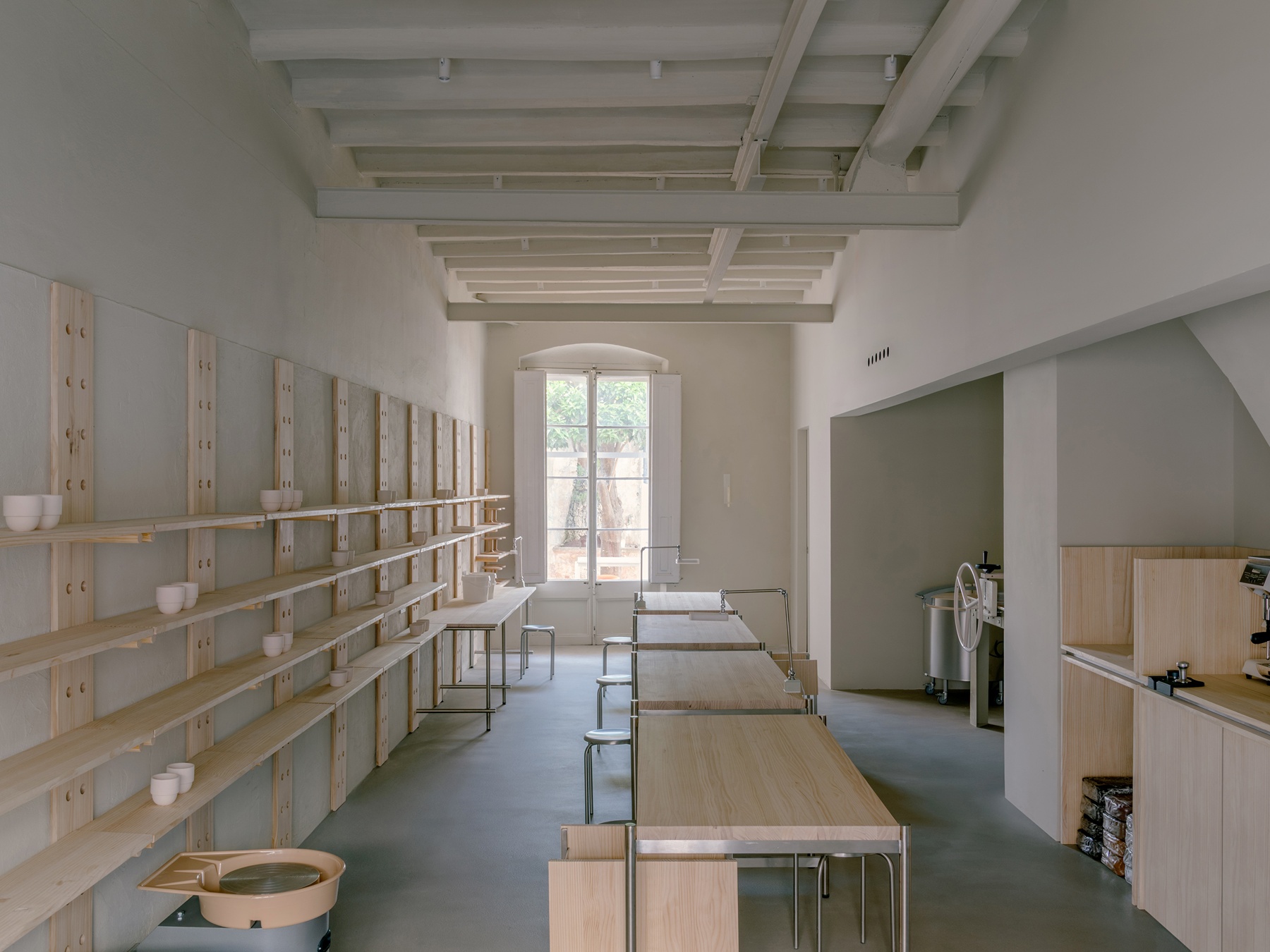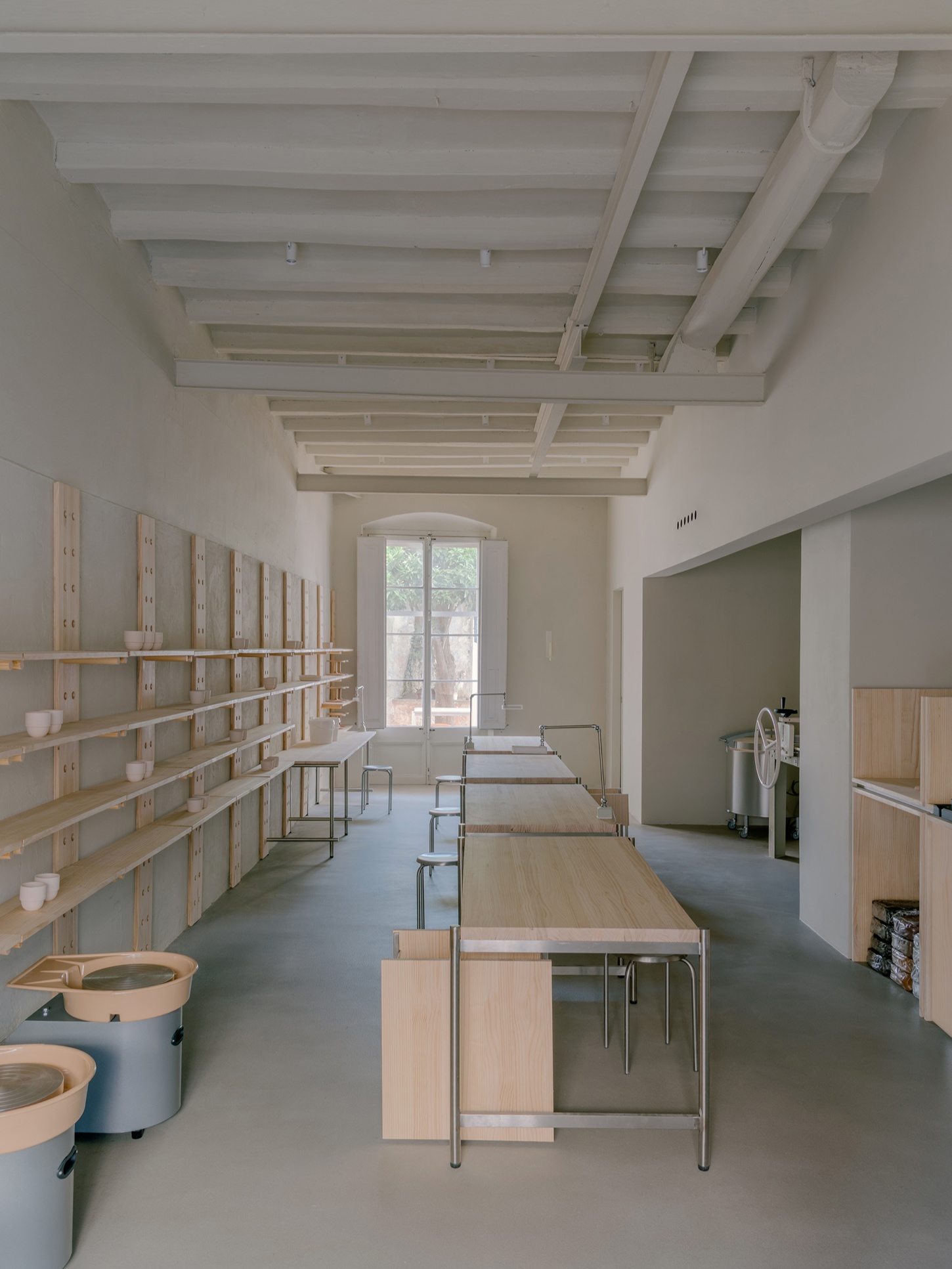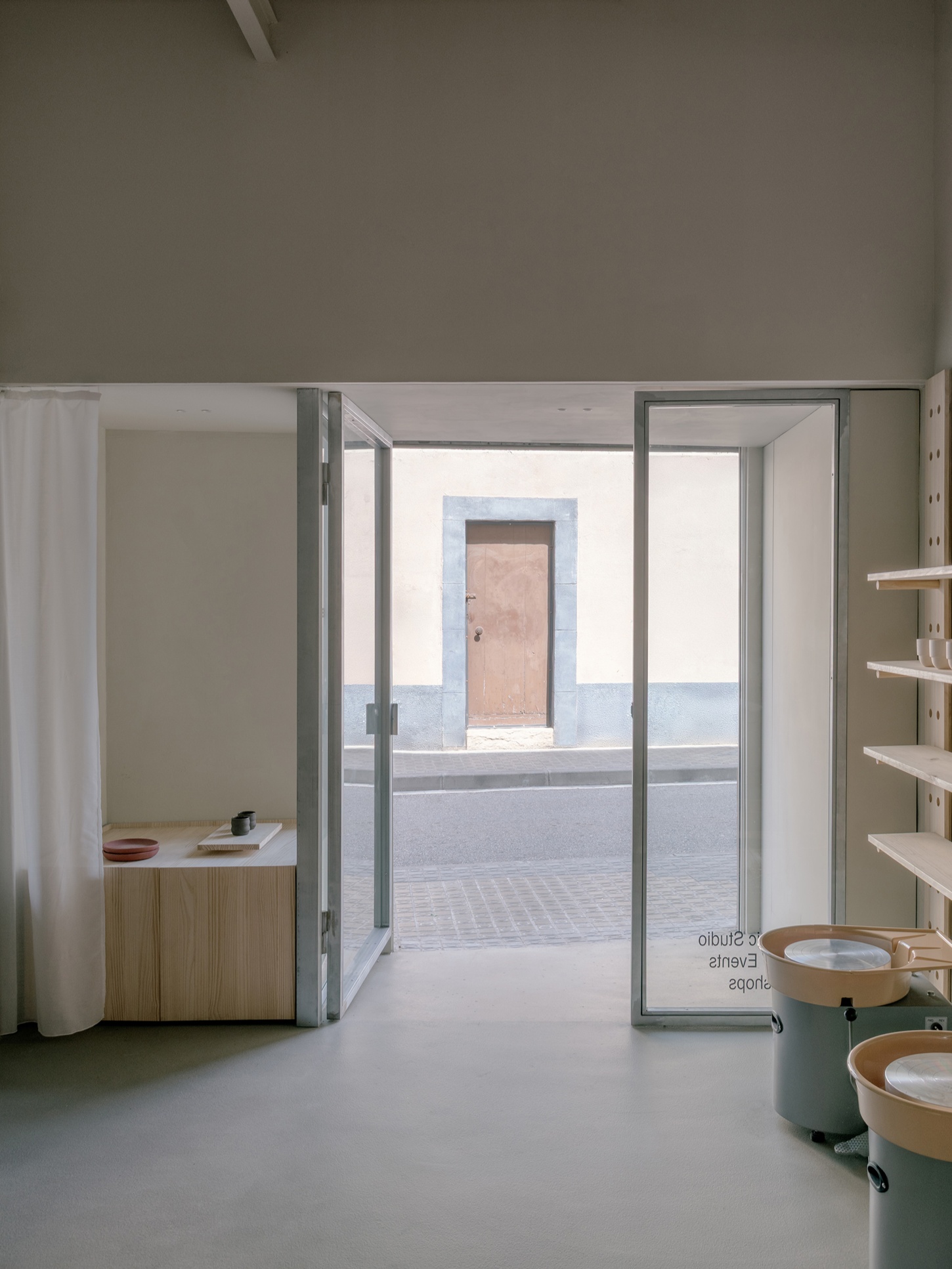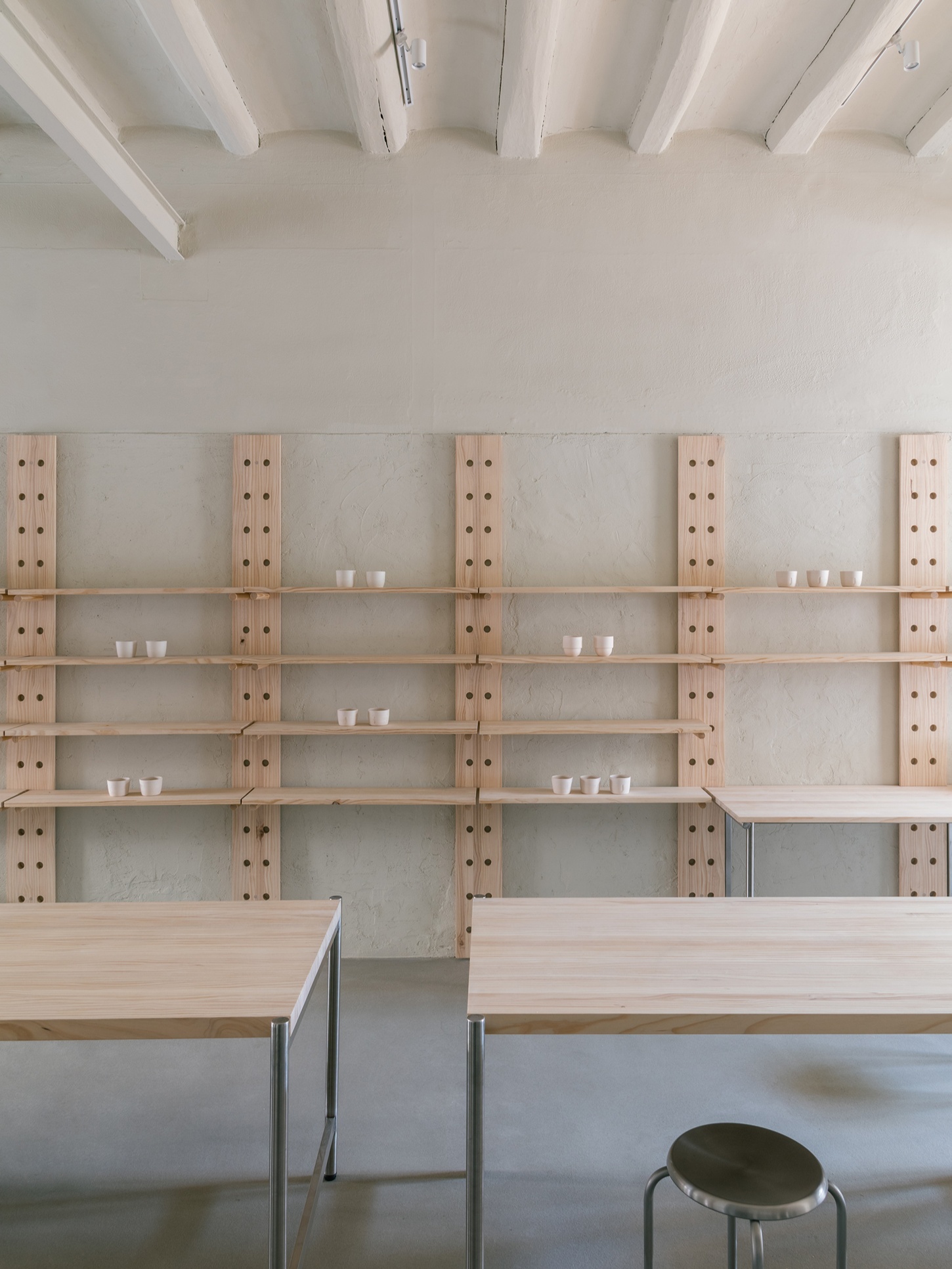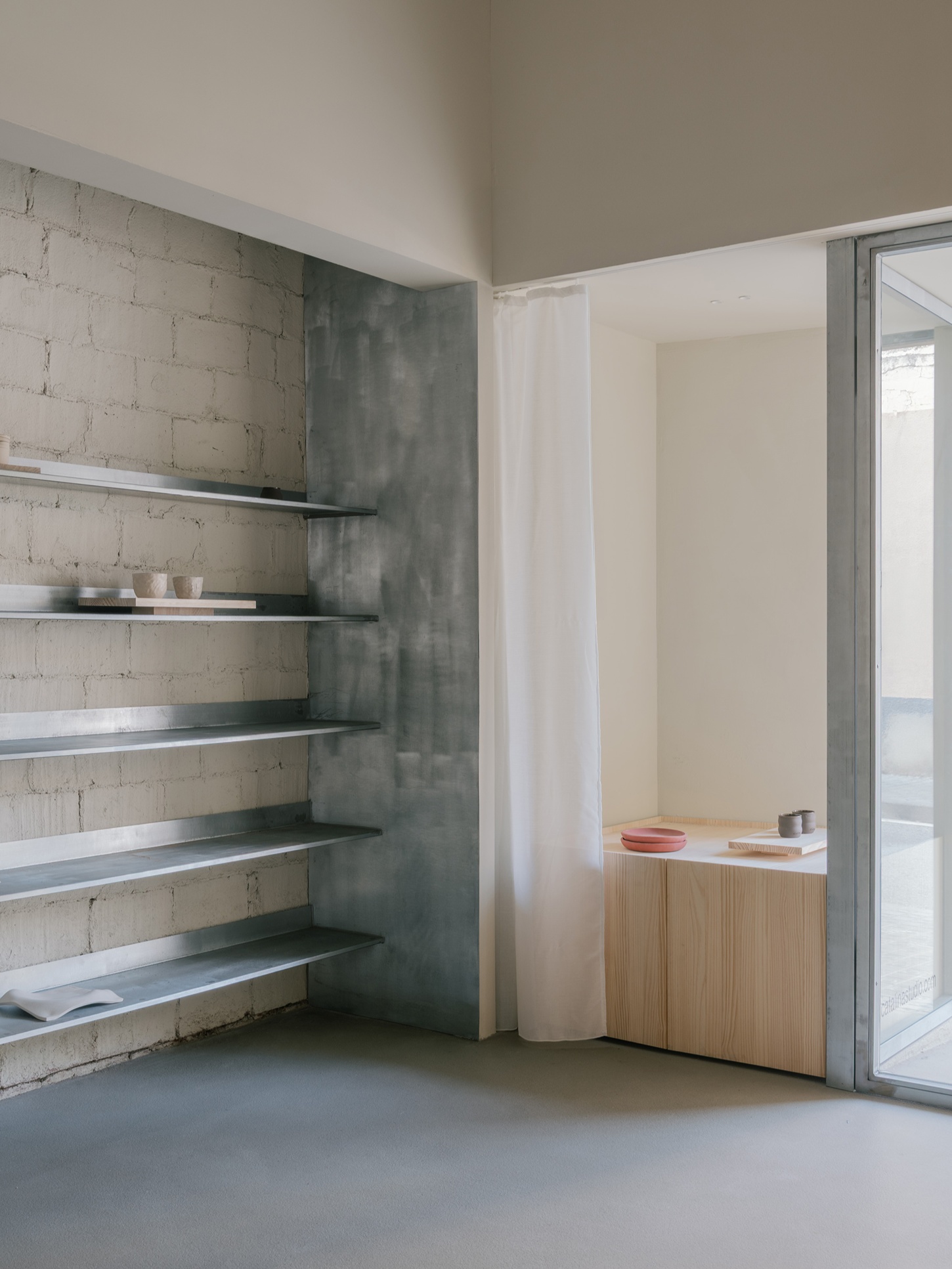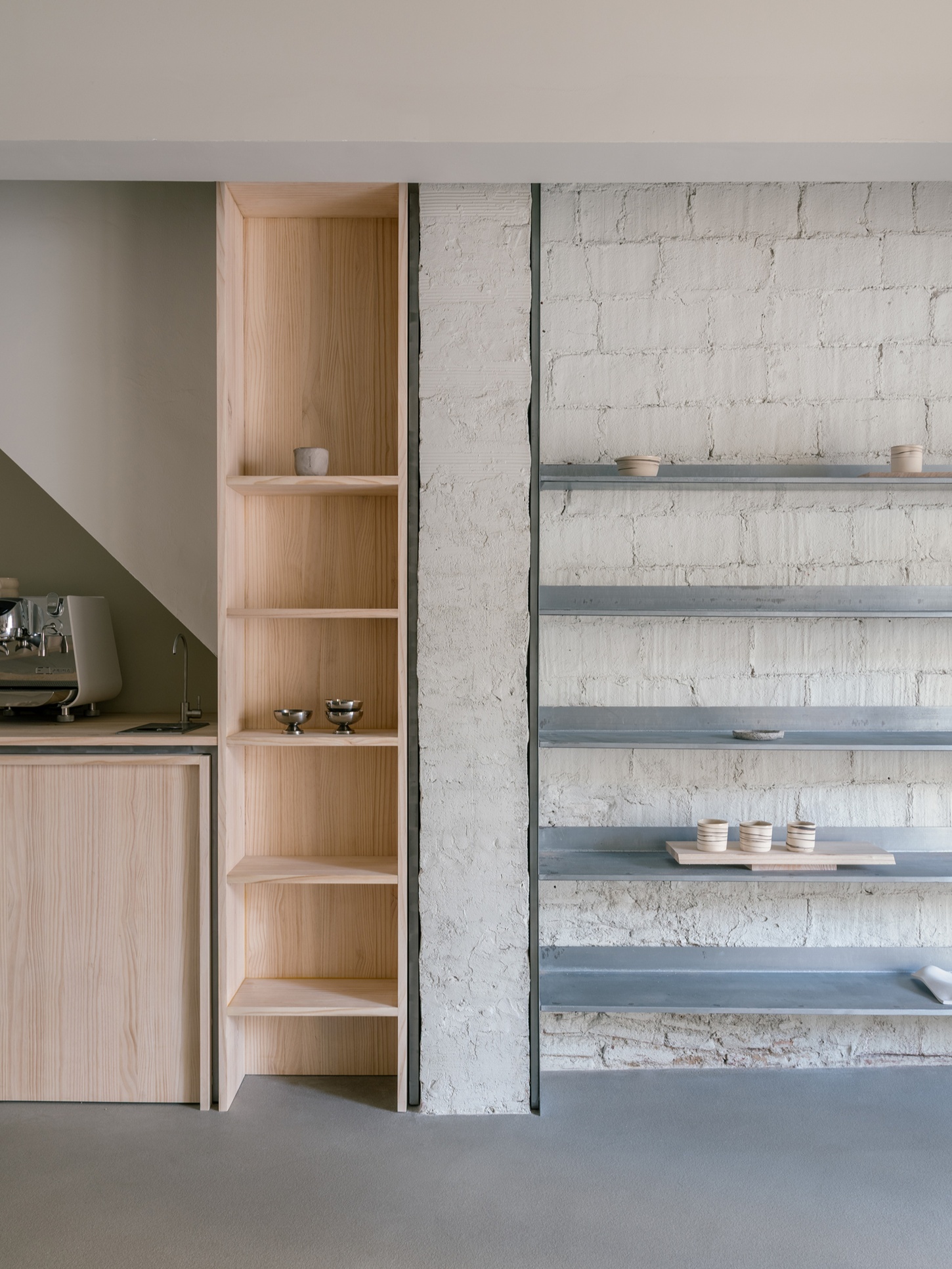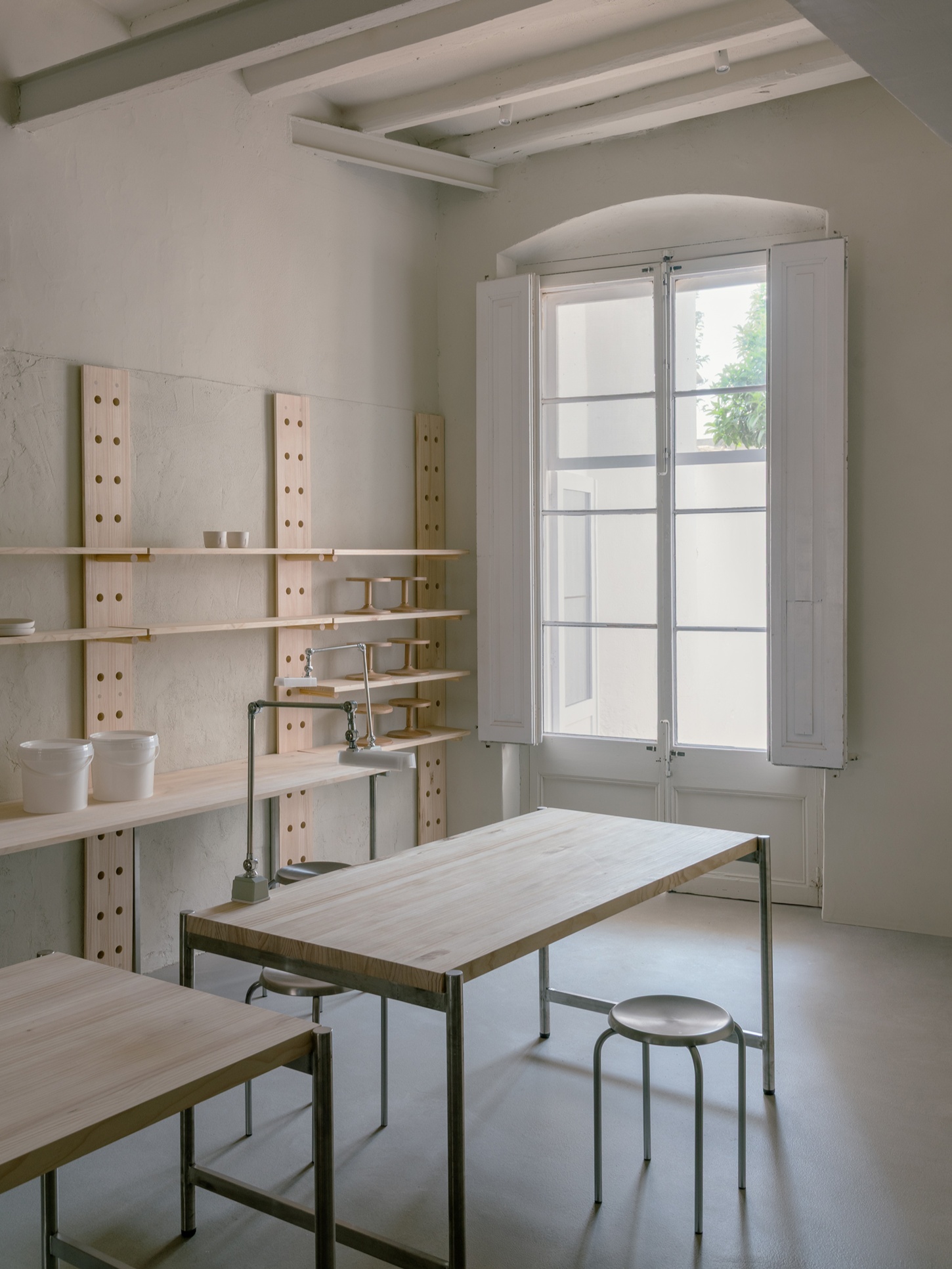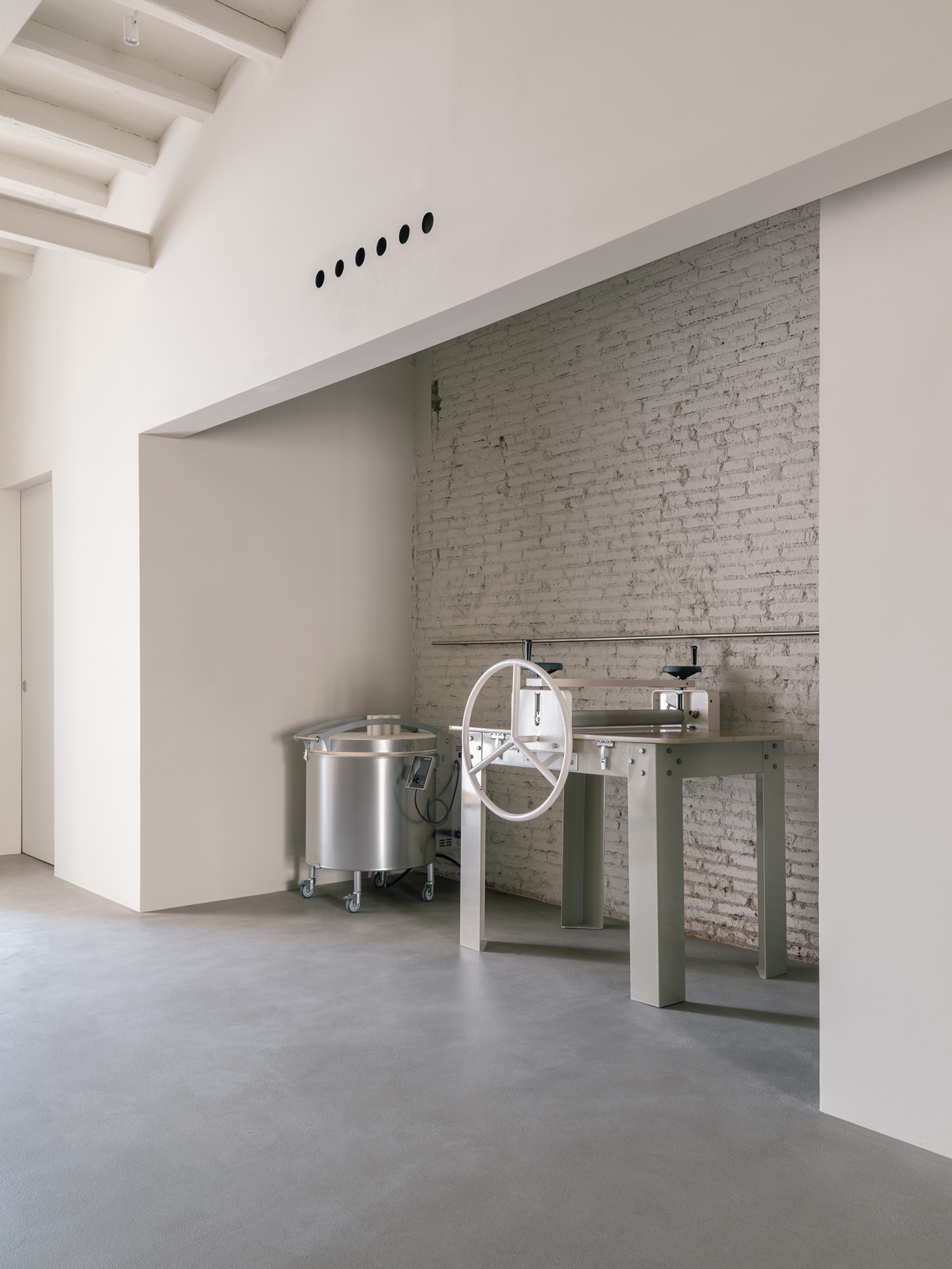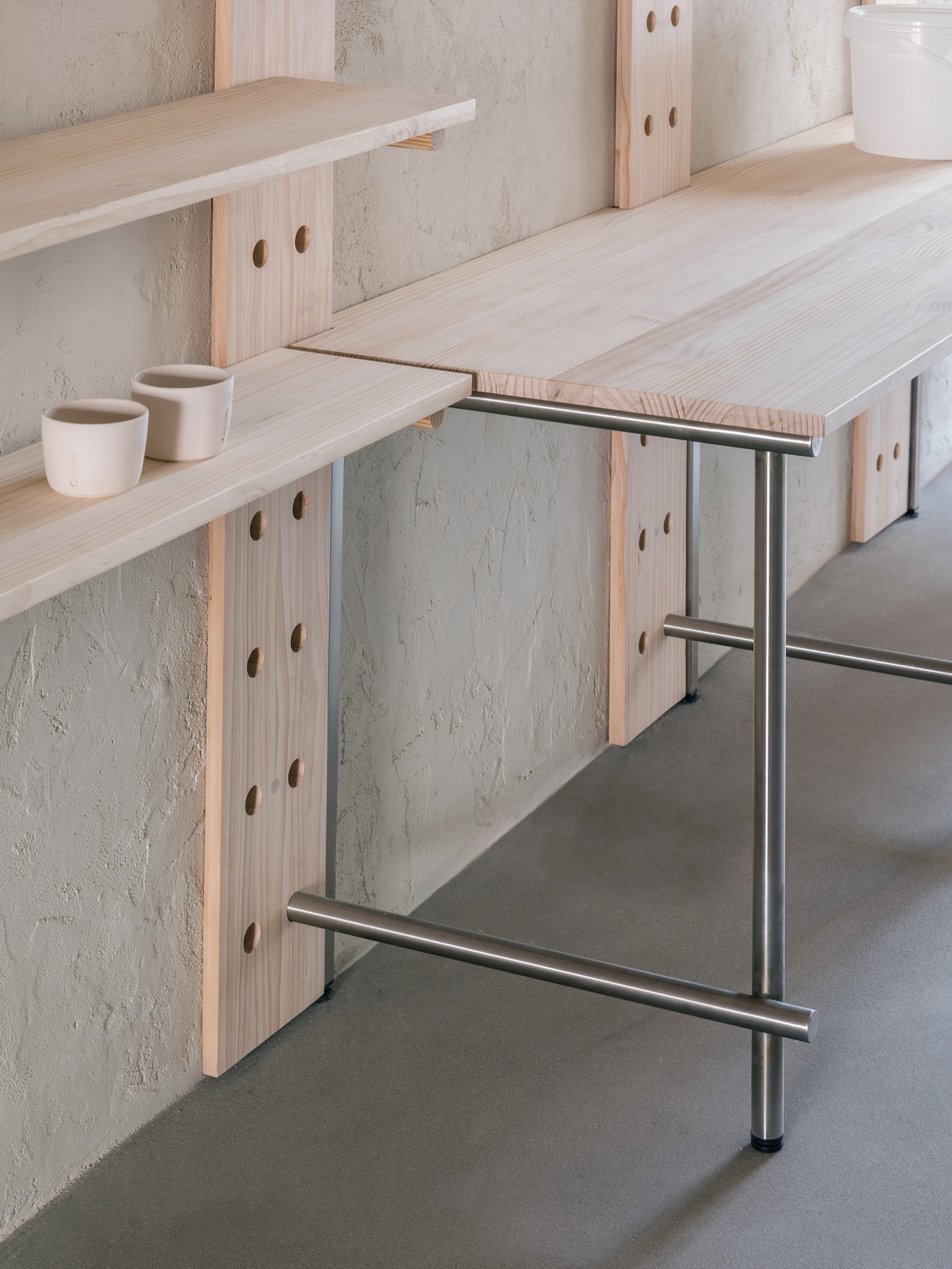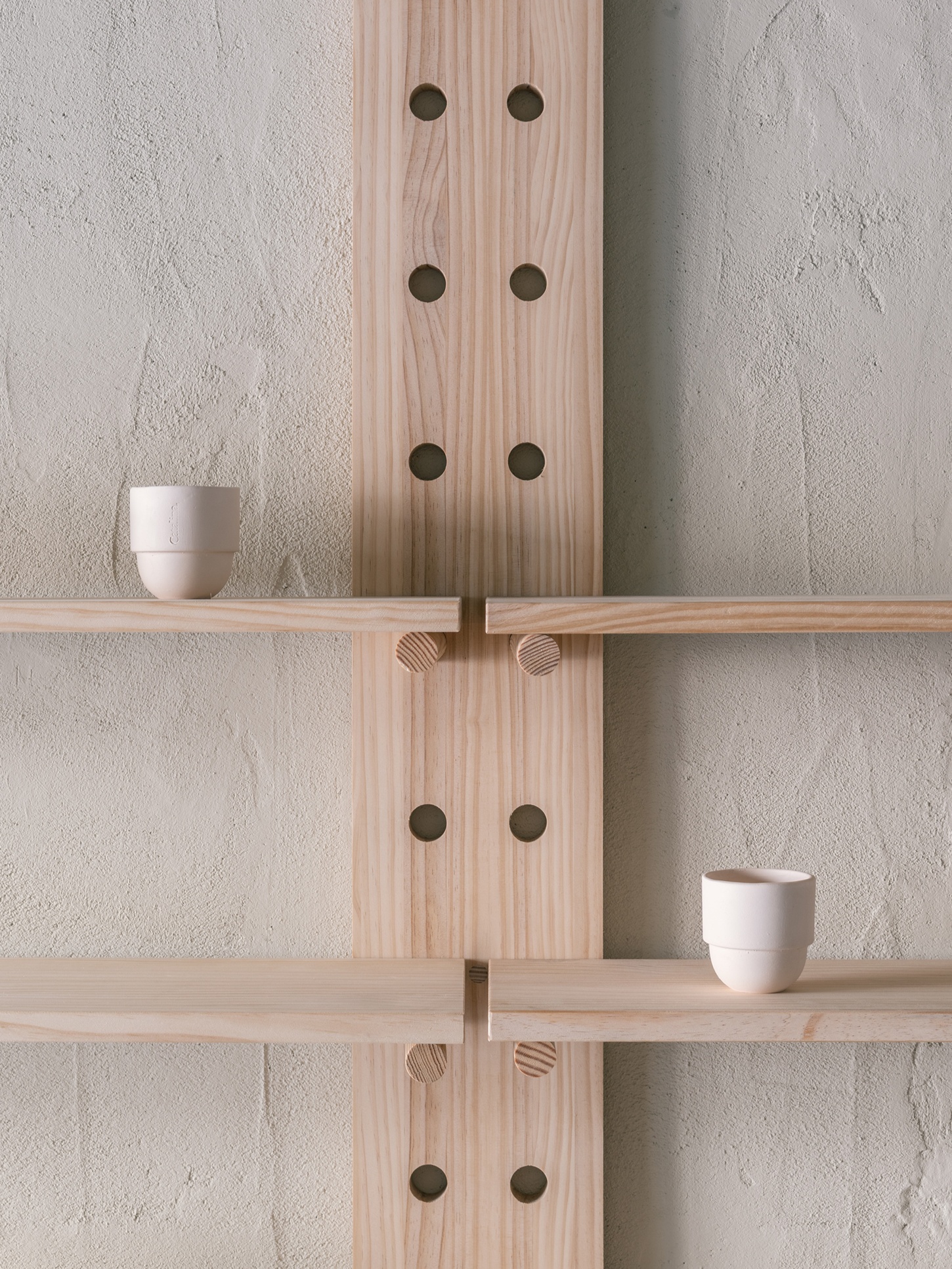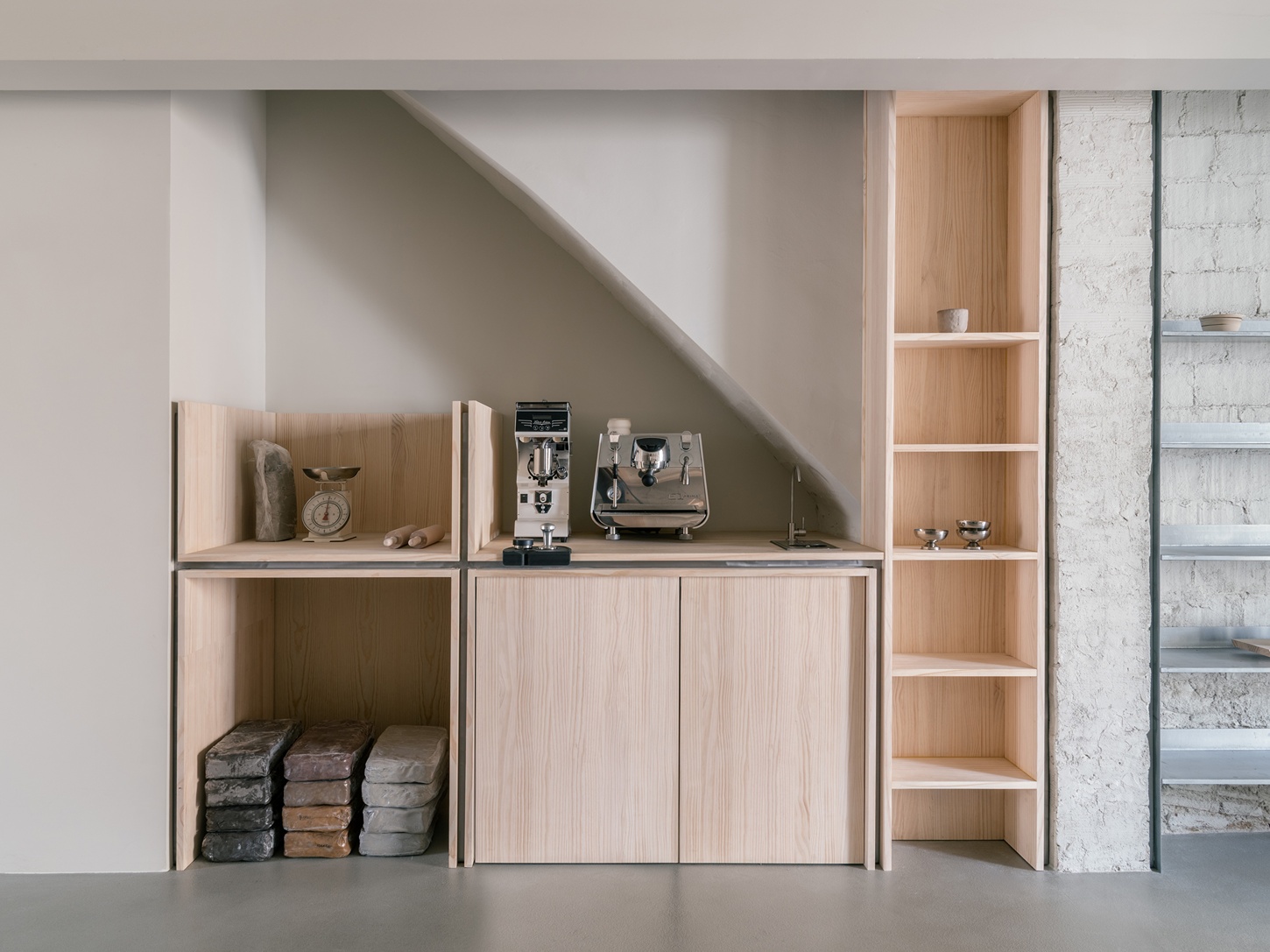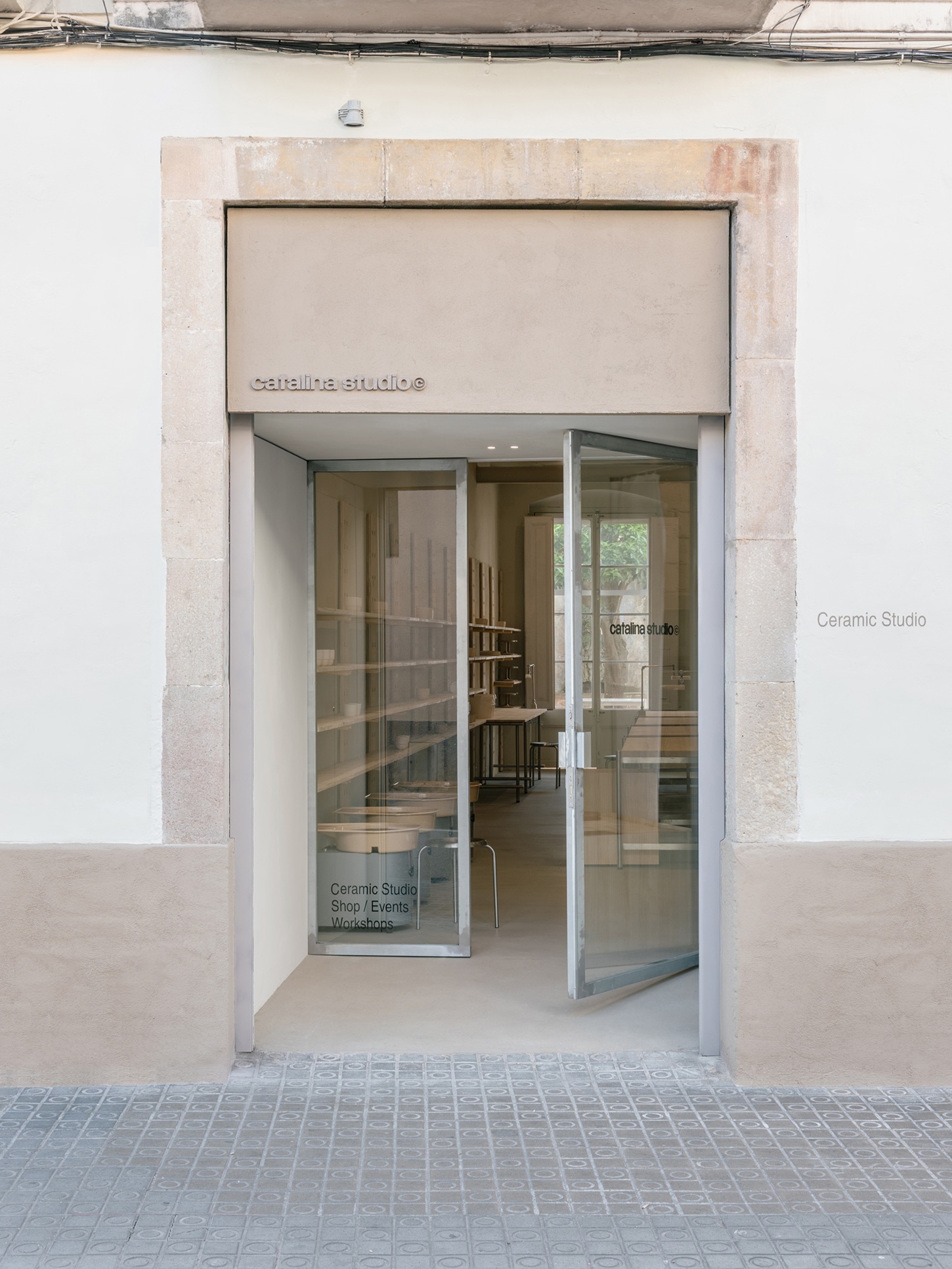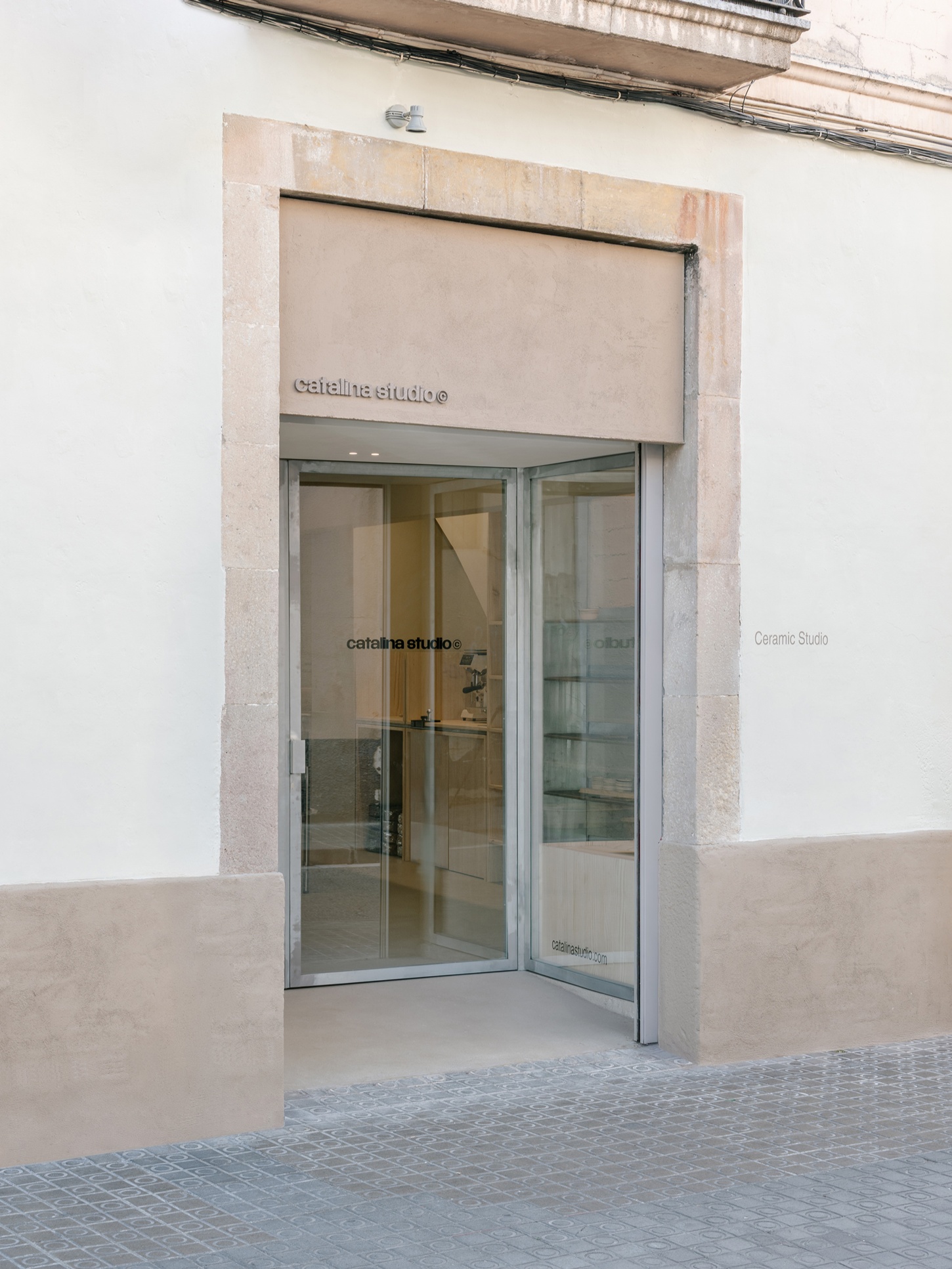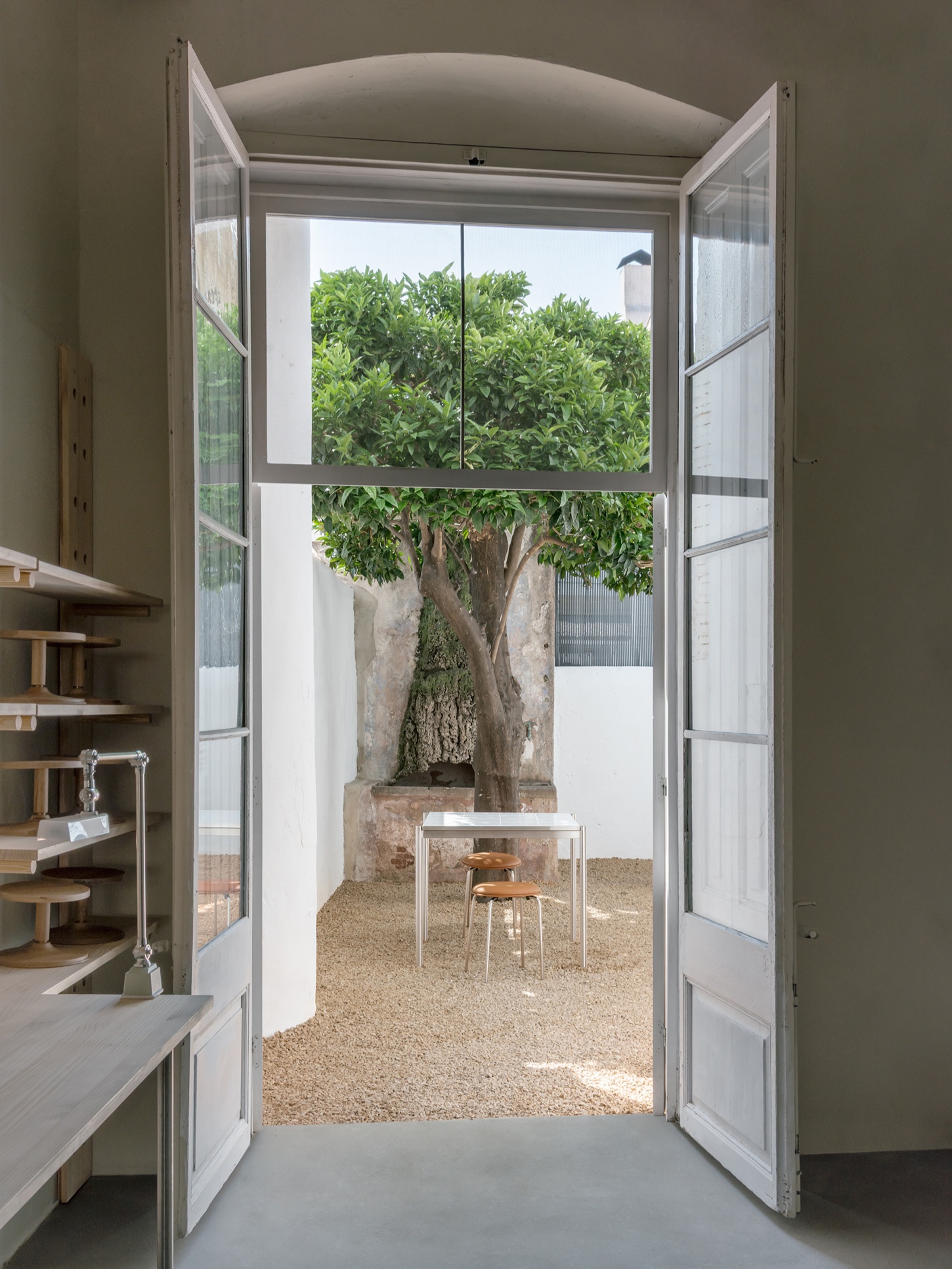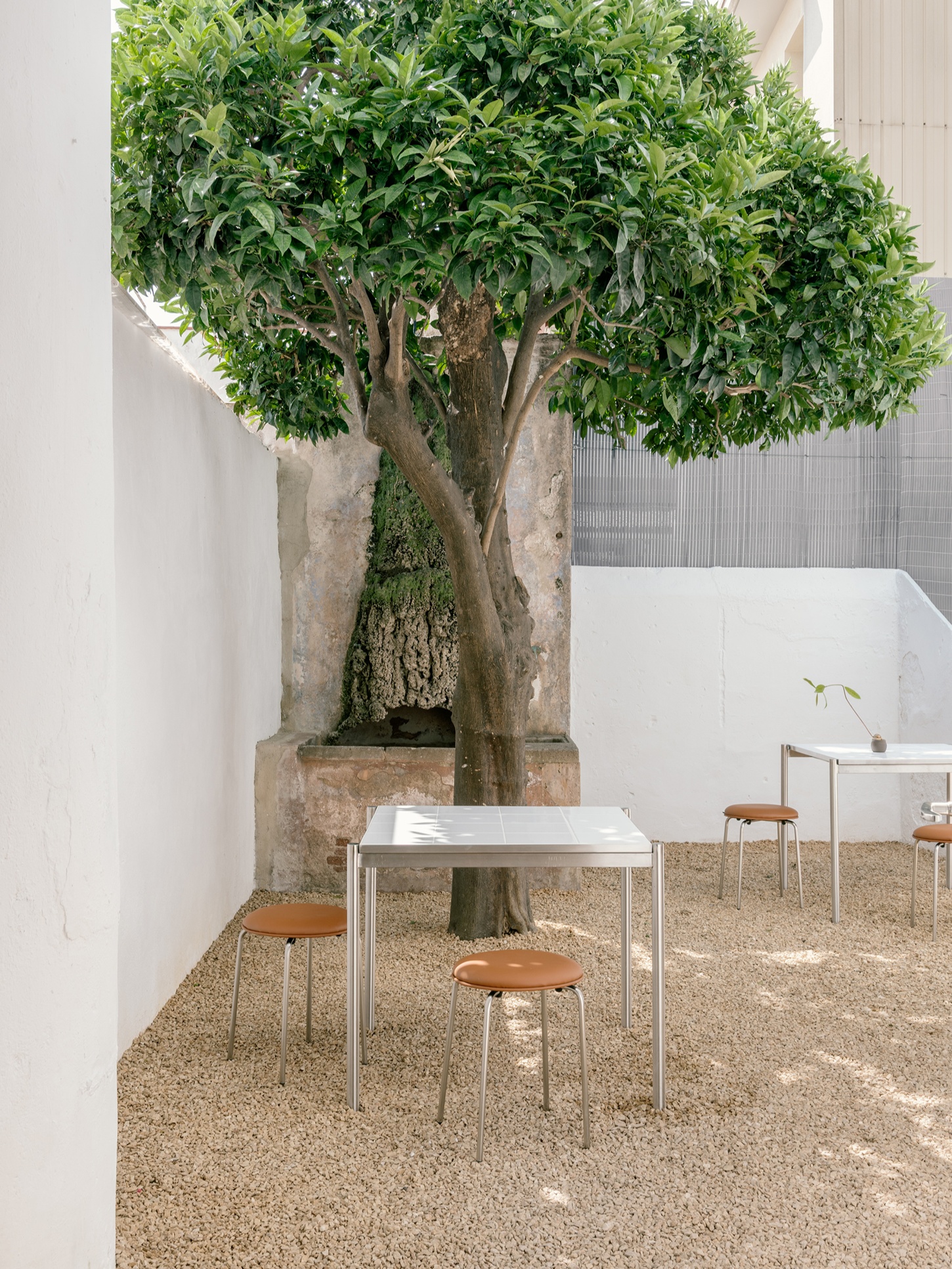Correa Studio completed the new space for Catalina, the clay workshop studio, space event - multipurpose space. All carefully planned and based on the simple multifunctional shelving system.
The central area remains open and unobstructed, furnished only with movable elements—tables and carts—that can be reconfigured as needed to suit different activities.
All furniture—tables, shelves, benches, and workstations—follows a modular logic that promotes repetition, easy assembly, and adaptability. Tables are built to a single standard dimension, allowing them to function individually or be combined into larger work surfaces. Shelves feature adjustable-height levels, supporting a range of uses while maintaining visual consistency throughout the space.
Constructed from standard-sized boards, every component was designed to opti- mize material use, simplify transportation, and streamline construction. This prac- tical, intentional approach supports the project’s commitment to sustainability—an efficient, minimal system that remains open to future evolution.
The spatial concept is driven by a clear principle: versatility and functionality. To achieve this, a simple yet effective strategy is employed—define the perimeter and liberate the center. The walls take on an active role in the daily workflow, housing shelves for pieces in progress and finished works, designated workstations, and essential equipment such as the kiln, slab roller, sink, and wheels.
Crafted with the same care and sensitivity required in working with clay, this pro- ject was conceived with meticulous attention to detail, a respect for process, and a deep connection to materials. It is a functional space that accommodates classes, events, a retail area, and a workshop—while maintaining the essence of an active studio within a warm and understated atmosphere.
The material palette embraces honesty and simplicity, reflecting the artisanal character of the studio. Natural pine, galvanized steel, and reclaimed ceramic tiles from the studio itself form the foundational elements. These are complemented by resin flooring with aggregates, exposed mortar, and clay-based paints—creating a tactile and grounded environment that blends technical precision with everyday warmth.
Color is used sparingly and evocatively, drawing inspiration from raw clay without resorting to literal mimicry. The space becomes an extension of the creative pro- cess—architecture not only houses production, but elevates and supports it. In this way, the studio fosters a continuous dialogue between the cool functionality of an industrial workspace and the warmth of a lived-in environment, revealing a productive tension between the technical and the intimate.

